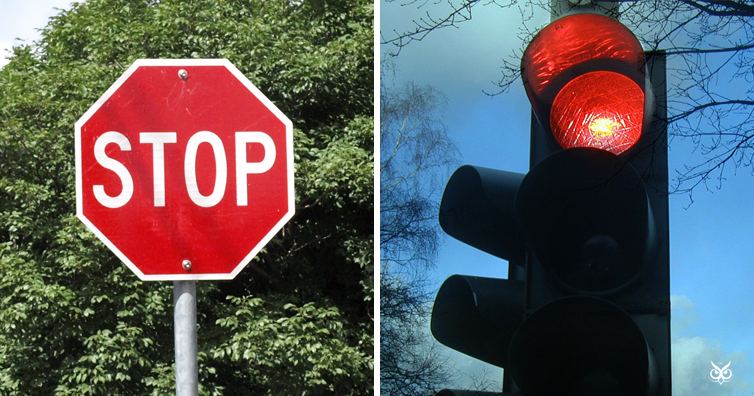It’s one of those things that we got used to it and we don’t often ask why, but have you ever really wondered why red is the color of choice for danger signals and stop lights? Well, wonder no more because we have the answer for you.
First of all, we need to clarify that red was not chosen for just one reason. As it turns out, red has several properties that make it ideal for signs and stop lights.
Let’s see the three main reasons: (the article continues after the ad)
WAVELENGTH
Red color has a wavelength of around 640 to 720nm. This makes red light scattered the least by air molecules and therefore is able to travel the biggest distance and through fog, rain and low visibility conditions.

BLENDING IN WITH THE ENVIRONMENT
Because red is not commonly found in nature, a red sign can stand out more clearly against a green or brown/yellow background.

It’s important here to note that stop signs were originally yellow and not red. The color was changed to red in 1954 when durable fade-resistant red coatings were available to use by sign makers.

OBEDIENCE
Red has an inherent power to command our obedience. This is why red color is commonly used in heraldry and can be found on 30.3% of the flags (the most frequent flag color) as well as in the majority of the coat of arms. This instinct to associate red with authority is especially useful for danger signal and stop lights as it encourages people to obey more than any other color.
If you like what you read, then you will definitely love this one: There’s A Reason Why Pilots Dim The Cabin Lights During Takeoff And Landing
Photo: Wikimedia, kalhh / Pixabay
Photoshop: I’m A Useless Info Junkie
Sources: Why is red colour used in the danger signals? Is there any scientific reason for this? | Why are warning signs red? | Why Are Stop Signs Red? | Were STOP signs ever yellow? | Meaning of Colors and Coat of Arms Symbols



